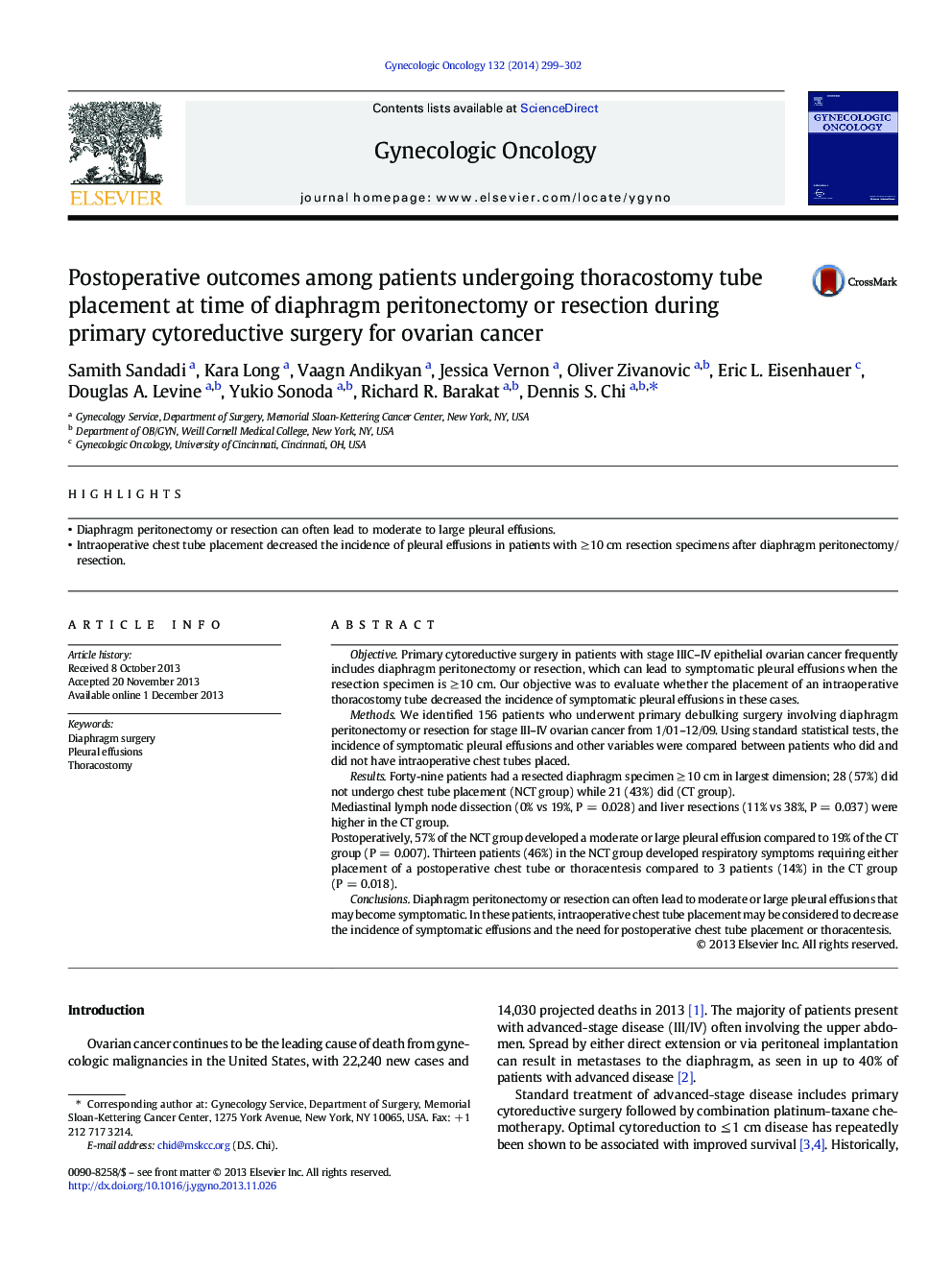| کد مقاله | کد نشریه | سال انتشار | مقاله انگلیسی | نسخه تمام متن |
|---|---|---|---|---|
| 6183548 | 1254107 | 2014 | 4 صفحه PDF | دانلود رایگان |
- Diaphragm peritonectomy or resection can often lead to moderate to large pleural effusions.
- Intraoperative chest tube placement decreased the incidence of pleural effusions in patients with â¥Â 10 cm resection specimens after diaphragm peritonectomy/resection.
ObjectivePrimary cytoreductive surgery in patients with stage IIIC-IV epithelial ovarian cancer frequently includes diaphragm peritonectomy or resection, which can lead to symptomatic pleural effusions when the resection specimen is â¥Â 10 cm. Our objective was to evaluate whether the placement of an intraoperative thoracostomy tube decreased the incidence of symptomatic pleural effusions in these cases.MethodsWe identified 156 patients who underwent primary debulking surgery involving diaphragm peritonectomy or resection for stage III-IV ovarian cancer from 1/01-12/09. Using standard statistical tests, the incidence of symptomatic pleural effusions and other variables were compared between patients who did and did not have intraoperative chest tubes placed.ResultsForty-nine patients had a resected diaphragm specimen â¥Â 10 cm in largest dimension; 28 (57%) did not undergo chest tube placement (NCT group) while 21 (43%) did (CT group).Mediastinal lymph node dissection (0% vs 19%, P = 0.028) and liver resections (11% vs 38%, P = 0.037) were higher in the CT group.Postoperatively, 57% of the NCT group developed a moderate or large pleural effusion compared to 19% of the CT group (P = 0.007). Thirteen patients (46%) in the NCT group developed respiratory symptoms requiring either placement of a postoperative chest tube or thoracentesis compared to 3 patients (14%) in the CT group (P = 0.018).ConclusionsDiaphragm peritonectomy or resection can often lead to moderate or large pleural effusions that may become symptomatic. In these patients, intraoperative chest tube placement may be considered to decrease the incidence of symptomatic effusions and the need for postoperative chest tube placement or thoracentesis.
Journal: Gynecologic Oncology - Volume 132, Issue 2, February 2014, Pages 299-302
